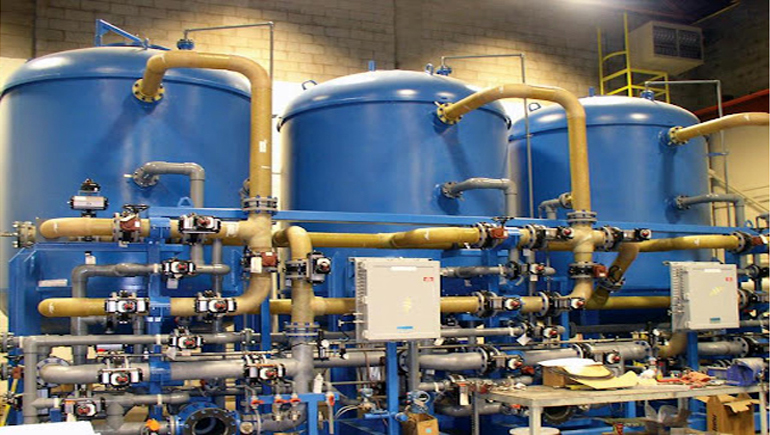PRODUCTS & SERVICES




Ion Exchangers
Ion exchange is one of the oldest and best-established technologies for the removal of dissolved solids and primarily salts in water. The process is also referred to as demineralization.
KREYWIN is involved in offering an exhaustive range of ion exchangers that is best known for its high quality & high performance. We offer thoroughfare regeneration systems, co-current and counter current regeneration systems. Our range includes softening plants, demineralization plant, mixed bed etc. The entire ranges of plants are available in different moc like FRP, MS, MSRL etc. They are available fully automatic, remotely operated, manually operated or with multiport valves.
The processes of water treatment in ion exchange technology are broadly classified into the following
- Softeners (Base Exchangers)
- De-Mineralizers & Mixed Bed Polishers
- Condensate Polishers
- De-Alkalizers
- Electrodeionizers (EDI)
- Specialty Applications
- o Nitrate Removal
- o Boron Removal
- o Fluoride Removal
- o Organic Scavenger / Color Removal
a) Softeners
KREYWIN offers ion exchange softeners for several industry groups. This includes food and beverage manufacturers, automobile manufacturer paint and washing units, hotels and restaurants, air conditioning plants, textile manufacturers, commercial laundry management. Hard water is considered un-fit for both industrial and domestic use.
Calcium (Ca2+) and Magnesium (Mg2+) are two of the salts/minerals that are responsible for hardness in water. The ions of these minerals/salts cause scaling of pipes and equipment, change the taste of water and are a primary problem to the laundry process. Ion exchange softeners we offer are use in boiler feed water decalcification plants, cooling towers and sewage treatment plant (STP) treated water recycling. Water softeners containing resin beads (ion exchangers), designed to exchange Ca2+ and Mg2+ ions with sodium ions.
Ion Exchange Water Softener Plants remove calcium and magnesium from hard water to produce softened water. A water softener uses sodium to help replace calcium and magnesium ions. Unlike hard water, softened water will not leave any residue or scale on contact surfaces. We offer softening solutions for various applications such as boiler feed, cooling tower, heat exchangers, mould cooling, process, component washing, laundry, domestic use and also as a pretreatment to RO, where hardness can cause considerable damage to process or equipment involved. We have interesting technologies to use weak acid cation resins in softeners as well as utilization of spent brine for better performance at lower cost.
c) Condensate Polishing Unit (CPU)
During the process of steam generation in power plants, the steam cools and condensate forms. The condensate is collected and then used as boiler feed water. Prior to re-use, the condensate must be purified or "polished", to remove impurities (predominantly silica oxides and sodium) which have the potential to cause damage to boilers, steam generators, reactors and turbines. Dissolved (silica oxides) and suspended matter (iron oxide particulates from corrosion, also called 'crud'), as well as other contaminants, can cause corrosion and maintenance issues are effectively removed by condensate polishing treatment.
A condensate polisher is a device used to treat water condensed from steam as part of the steam cycle to prevent return steam condensate contaminants and corrosion products from entering into the turbine / boiler. Condensate polishing typically involves ion exchange technology for the removal of traces of dissolved minerals and suspended matter. The improved quality of condensate duly polished reduces scale formation inside the boiler tubes, which in turn results in higher steam generation and effects better economics.
Our superior condensate polishing ion exchange resins excel in capturing corrosion products in the condensate stream. This polishing typically involves ion exchange technology for the removal of trace dissolved minerals and suspended matter. It is generally used as part of a power plant's condensate system and prevents premature chemical failure and deposition within the power cycle which would have resulted in loss of unit efficiency and possible mechanical damage to key generating equipment.
CPU reduces treatment cost drastically as it contains minimal impurities and hence economical than treating raw water where dissolved impurities are high. Specialty resins are also available for treating the condensate at elevated temperatures which reduce the heat loss there by reducing fuel cost for the end customer.
b) DM Plant & Mixed Bed (MB) Polisher
Ion exchange process utilizes ion exchange resin for the removal of dissolved salts in surface and groundwater sources to meet industrial water standards. Demeralisation plants are used for the purpose of TDS reduction to required levels. In these plants, impurities are replaced by hydrogen and hydroxyl ions, and the water that is produced is extremely pure.
We design, manufacture and supply DM plants and mixed bed (MB) polishers considering various aspects of salt composition and suggest best schemes including combinations of SAC, WAC, SBA, WBA and layered bed units for capex and opex optimization. We use resin manufacturer graphs and guidelines of regeneration levels, exchange capacities, velocities, bed depth, bed expansion, pressure drops, various ratios of impurities etc to optimize resin performance and regeneration chemical consumptions through selection of up-flow, down-flow, co-current and counter-current regeneration techniques.
d) DE-Alkalizers
De-Alkalizers are used typically in small boilers or specific applications where apart from softening, alkalinity (carbonates and bicarbonates) also has to be reduced. Usually a split-stream de-alkalizers are very commonly used wherein one stream passes through a softener and one stream through SAC, followed by degasser tower for removing Co2 from water. Partial TDS reduction is possible in this scheme to the extent of alkalinity present in water.
25, Ojo Olagun close, off Bishop Oluwole st,
Victoria Island Lagos Nigeria




